Lakewood Early History: 1978-1987
Originally written for the Lake Oswego Review
by Joanne Bastian – Lakewood Board member
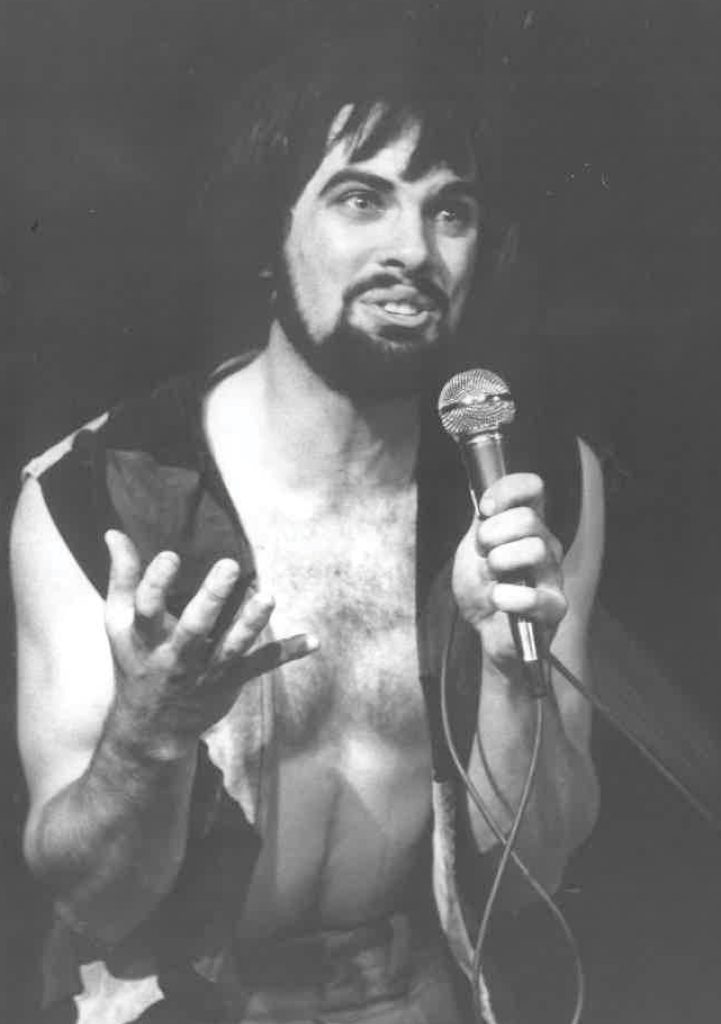
1975 Jesus Christ Superstar, David Durocher as Judas – directed by Steve Knox Named Best Actor OTAS – 1975
In 1978 the Board of Directors of Lake Oswego Community Theatre had a dream. Having outgrown their small 100 seat theatre, they wanted a new, larger theatre space. But their dream went beyond that. They wanted to start a Center for the Arts to serve the people of Lake Oswego. It should be large enough to hold classes and provide a meeting place for Community use. They began looking for a facility to house this dream.
An advisory committee, made up of community and business leaders, was set up to determine the feasibility of a self-sustaining community cultural center. These mentors agreed it was possible, but warned its success would lay in diversity. For success, the Center must encompass all of the arts, appealing to every age and artistic interest. It should encourage people to learn, teach, train, display, participate in and enjoy the arts and provide a meeting place for the community. The LOCT Board agreed with this advice and planning began.
In 1979 the Lake Oswego School Board announced that they would close Lakewood School. LOCT Board members knew Lakewood School would be the perfect place to bring their Center for the Arts to life. Their decision made, funds needed to be raised to make it possible.
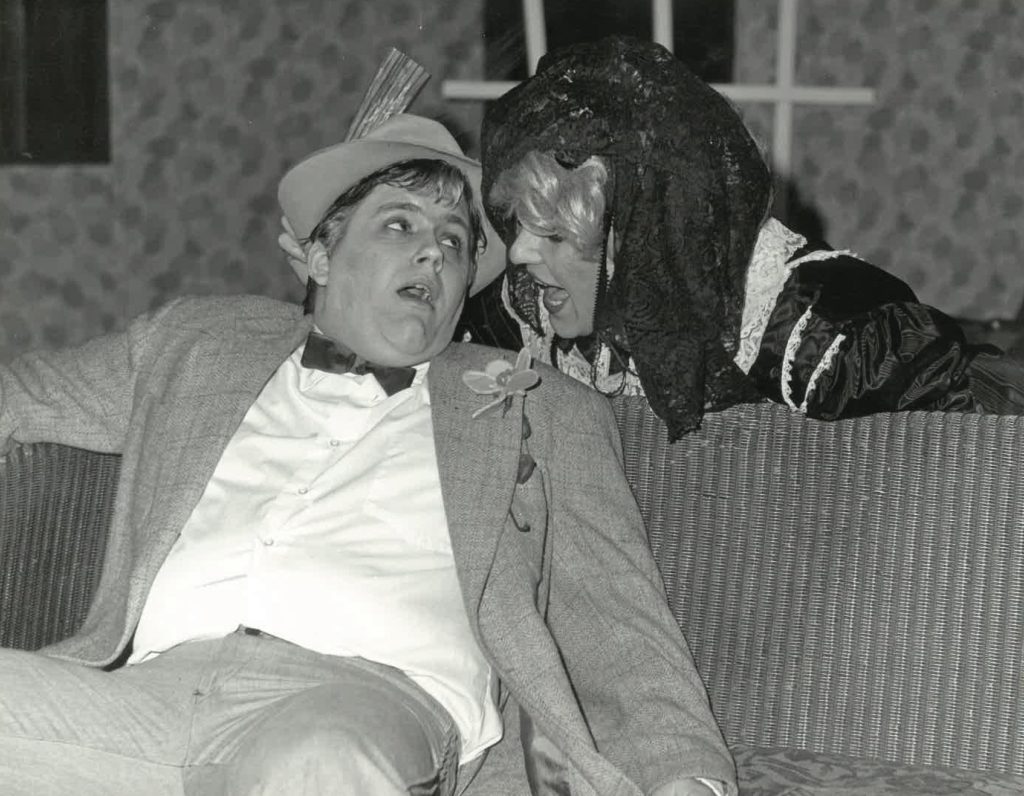
1976 Charley’s Aunt, John Lewis, Steve Knox
The advisory Committee moved into place as leaders of the Lake Oswego Community Theatre fundraising campaign. Ed Hart agreed to chair the drive. Long months of negotiations took place between the nonprofit theatre group and the local school district to purchase the historic half century old Lakewood building. On October 20, 1980, School Board Chairman Jerry Isom and Hart signed the contract that turned over Lakewood Elementary School to LOCT. School Superintendent Don Charles witnessed the signing.
Hart sent a letter to the people who had become the Supporters of Lakewood Center reporting, “over $700,000 has been pledged to date, enabling us to complete Phase 1, “the contract to purchase the Lakewood School.” His letter also announced a Center governing council. Members were Eleanor Clark, Virginia Campbell, Gerri Tisdel, Dick Ross, John Souther and Bill Headlee. They would make decisions on occupancy of rental space. They also appointed Andrew Edwards, LOCT’s Manager, to be Executive Director of the Center. Fund raising continued for renovations of the space and the construction of a 250 seat main theatre.
Lakewood Center for the Arts’ first lease for studio space was signed on November 1, 1980 by Rhonda Gates, Inc., for a dance fitness program for women.
On December 4, the Lake Oswego Design Review Board gave approval to convert Lakewood Elementary School to Lakewood Arts Center with approval of construction of a new theatre and remodeling of the building. Design Review Board members agreed “the new arts center is a noteworthy project for Lake Oswego” and indicated they were eager to work with the new Art Center’s Board.
“Snow White and the Seven Dwarfs” was the first production at Lakewood Center. 1,500 young people and adults enjoyed the holiday show seated on rented bleachers in the elementary school gym. Actresses Lisa Coury, Anna Donna and LaVerne Springer led the cast of many children in eleven performances.
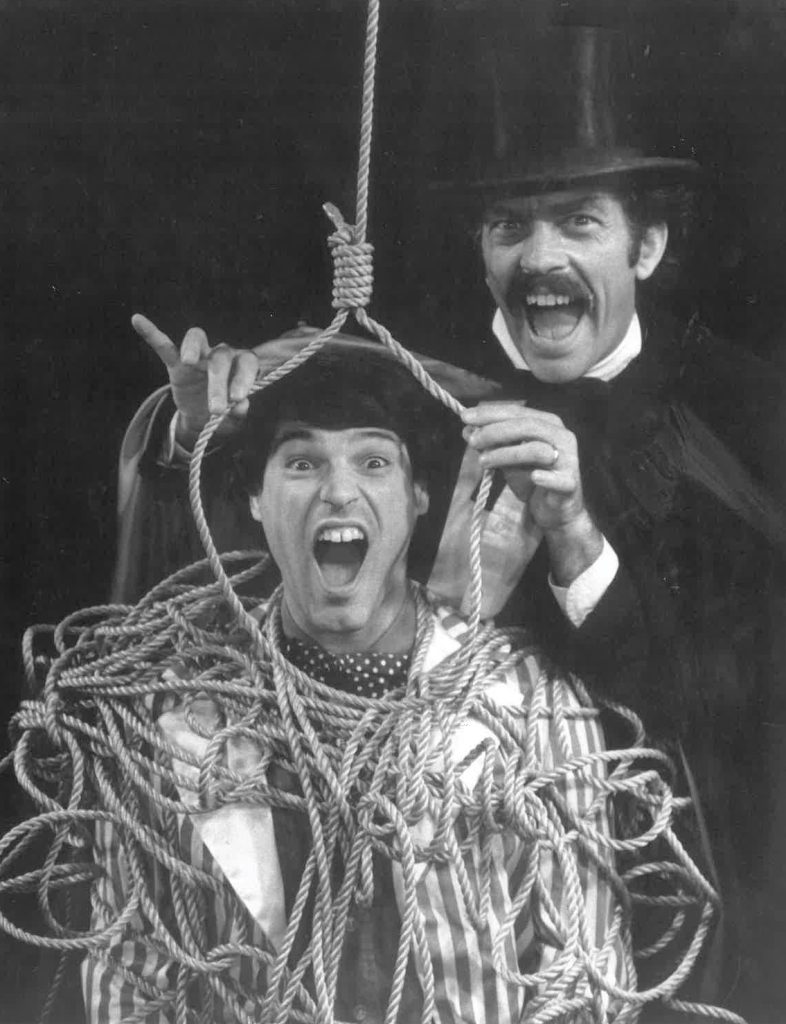
1982 October, A Fate Worse Than Death, Robin Buckner, Sunny Sorrels, first production on Lakewood’s Side Door Stage – directed by Andrew Edwards
During 1981, new life eagerly flowed into the Center. The Oregon Concert Ballet leased studio space and announced Thomas Hargrove as Artistic Director and Marjorie Soriano as Executive Producer of the Ballet. All levels of classical ballet, jazz and women’s body conditioning were taught. KIDSWORLD, an award winning children’s television series, based in Miami, Florida, came to film eleven year old ballet dancer Lorene LaVoie discussing her training with Marjorie Soriano. She was interviewed by Jeremy Wilson, a friend and fellow student.
Charles Compton opened the Collector Gallery featuring art from the Southwest that included watercolors, glass work and bronze sculptures. Flamenco and classical Spanish dancer, Vivian Orbeck rented space for choreography and rehearsals.
Fund Raising continued. Mayor C. Herald Campbell formed the Mayor’s 400, a select group of business and professional people who realized the benefits that the arts and theatre can bring to a city. Entry into this select group was a $1,000 pledge. The “Night at the Movies Committee”, under the leadership of chairwoman Florence Giglio, held a Lakewood Center benefit at the Washington Square Tom Moyer Theatres. $1,000 was raised.
April saw the unveiling of a model of the new south entryway and stage house that was to be constructed on the building’s north face. Fisher, Wallin and Long Architects designed these additions. In an editorial, the Lake Oswego Review said, “An arts center fits this town like a glove. This is a community with a larger than average population of artists and art enthusiasts, but it has been a community with a limited ability to show off such flair and interest.”
Soft Sculpture artist Bev Butler Sokol moved her studio to the basement of Lakewood Center. The Artist Co-op Workshop Studio, shared by several artists, set up their workroom. Art viewers were delighted with the opening of The Lakewood Gallery, featuring the work of outstanding Northwest Artists. Two separate music studios were opened. Kay Vaga taught piano and organ and Frank Wiley worked with voice students.
Ellyn Anderson and Nicole Christianson found Lakewood and its playground a perfect setting to open their Community Arts Pre-School for three and four year olds. Western Ballet Theatre came to share the use of the dance studio space.

1983 September, Annie
In September, Mercantile Village donated $25,000 for construction of the Children’s theatre in the north end of the building. A flexible facility, it was designed to present theatre, mime, puppetry and film.
Serving on the Lake Oswego Community Theatre/Lakewood Center Board of Directors were Bill Headlee, President, Dick Deich, Secretary -Treasurer, Directors-at-Large: Richard Ross, Eleanor Anderson Lieber, John Souther, Gerri Tisdel, Virginia Campbell, Dee Denton, Tom Schmit, Ann McGranahan, Ann Deering, Jon Christensen, Jim Thomas and Elizabeth Ross. Anne Myers took over the chair of Lakewood’s Phase II Capital Fund Drive.
At their September meeting, the Board voted to postpone breaking ground on the 250 seat performing arts facility until the balance of the Capital Drive had been raised. This was in keeping with LOCT’s policy of not doing projects without funds in place.
When funds were available building renovations continued to be done. The Lake Oswego Rotary Club presented a $25,000 gift to sponsor the remodeling of several ground level classrooms into a large community meeting room. Architect Margie Largent designed the renovation of the space. The concrete wall along Middlecrest Street was cut through to bring more visibility and light into the area.
As soon as it was complete, the Community meeting room was filled with a wide variety of event such as weekly Lake Oswego Rotary Club meetings, The Junior Women’s art auction fun raiser, LOCT’s production of the old time melodrama, “Pure As the Driven Snow” presented to audiences sitting at cabaret tables hissing the villain and cheering the hero. It proved to be a very versatile space.
December 1981, brought two gifts to the Center by two local “Angels”. Maple hardwood flooring was donated by Jim and Suzanne Price, of Emerson Hardwood, to put a new floor in the Dance Studio. After reading about the gift, Lyle Heider of Heider Floor Service donated his equipment and expertise to teach volunteers to sand and finish the floor.
The Lakewood Center Art Association, a volunteer support group, was founded in January, 1982. It’s focus was to operate the Lakewood Gallery where the work of fine regional artists would be displayed. Governor Vic Atiyeh toured the Center when he spoke before a Boones Ferry Commercial Club luncheon at Lakewood. When asked about volunteerism and its role in future arts programming, he replied, “The Lakewood Center for the arts serves as an excellent example of what volunteerism can do in a community.” He went on to commend the citizens of Lake Oswego for their outstanding efforts in providing educational and showcase opportunities for local artists and the entire metropolitan area.
By 1982, 1500 people utilized the building and its activities each month. Sold out houses at LOTC’s Greenwood Road location prompted the theatre to produce in the community meeting room as a cabaret theatre.
Lake Oswego Junior Women’s Club held a 1950’s Rock ‘n Roll benefit dance featuring the music of Johnny Limbo and the Lugnuts. The Junior Women has contributed $8,600 to the Lakewood Capital campaign. Candace Hart, spokeswoman for the group said, “The Junior Women enjoy supporting the Center because it offers a myriad of educational and cultural activities.”
The Lakewood Center Children’s Theatre opened April 30, 1982, with a sell out performance of “The Emperor’s New Clothes” directed by Nancy Souther. Youths from 10 to 17 years of age filled all the roles on stage and backstage. The theatre’s programming is administered by the Education Committee of Lake Oswego Community Theatre.
New programs in 1982 at Lakewood included The Portland Opera Guild sponsoring previews of the Portland Opera productions; the annual Rotary Auction fund raiser held earned $20,000 for Lakewood; the second annual Leadership Conference honoring Herald and Virginia Campbell as Community Leaders of the Year.
Because of reduced economic activities, the Board of Lakewood Center made the decision to eliminate the building of the proposed stage house and proscenium theatre at this time. They voted to create a 200 seat theatre in the gymnasium space at Lakewood. This eliminated making the badly needed repairs in the 100 year old Greenwood facility. It was sold for $60,000. These funds were used to defray the major portion of the theatre construction expense. The 66-day project was done by Howard Means Builder Craftsman, with Harold Long, Fisher, Wallin & Long Architects & Planners, Karol Niemi & Associates and Andy Nacrelli, Irving Seating Company. Finished on time, the first production in the new Lakewood Center Theatre was the 1983 spring musical, “Pal Joey”. W. R. Grasle Co. Loaned LOCT a construction trailer, set in the parking lot, for storing and building sets until that time when the stage house becomes financially feasible.
With all theatre productions now done at Lakewood, the dressing rooms were remodeled. A Gala Dedication Ceremony for the Center was held on September 25, 1982. Peter deC Hero, of the region arts Commission, cut the ribbon. Entertainment by Dusty Rose Group rounded out the evening.
“Annie” opened the first full season in the new theatre space with every performance sold out. In the Side Door Stage, a comedy “A Pair of Hearts” made its premiere opening. Written by former Lake Oswego Monte Merrick, the production typifies the commitment LOCT makes in promoting new artists and producing original works. Directed by Jerry Leith, each act was opened with music and lyrics by Portland composer Dominique Roche.
Local 14 (Lake Oswego Crafts & Arts League) brought a Holiday art show to the Lakewood Gallery in December and the Lake Oswego Community Theatre Guild held the 3rd annual Christmas Craft Fair to raise funds for scholarships for performing arts students in the community.
On March 6, 1984 the Children’s Art Studio opened with its new renovated look thanks to a generous gift from the Russell F. Tromley Family. Chris Raish was the instructor with drawing and pastel classes for ages 7 to 15.
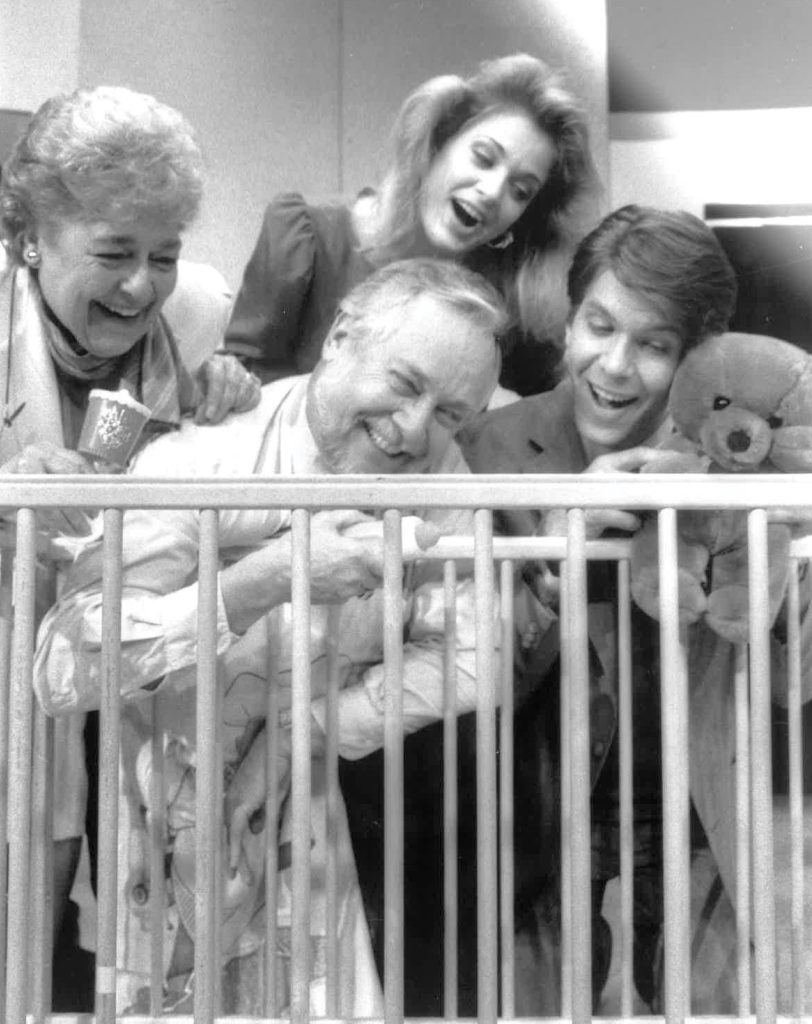
1987 Little Footsteps, Jackie Willis, Wendy Creswick, Jake Swinford, Tracy Conklin, directed by Jerry Leith
New Art Lighting was a designated gift from Jim Wizer and his friends attending the Jim Wizer Birthday Dinner. 400 feet of new lighting was installed in the main floor hallway. It enables the Center to showcase art displays.
The 21st annual Festival of the Arts took up residency at Lakewood Center in 1984. It was sponsored in conjunction with the Lake Oswego Chamber of Commerce and the City of Lake Oswego.
1984 marked the fourth year at the Center for the Community Arts Pre-School. It continued to grow with Lakewood, with a new pre-kindergarten class added.
Lakewood Center Associates, a new volunteer support group for the Center, was formed in the fall of 1984. Its main organizational task was to raise funds for the building and/or individual projects. Members opened ReRuns: Second Hand Treasurers sales shop in the Center. It features objects, collectibles and small furniture items, but no clothing, donated from the community. Grace Wygal and June Tofte were the first Chairwomen for the shop. Shop publicity chair, Liz Slauson, announced, “It’s an exciting trove of treasurers!” Remodeling was done by volunteers Reg Cunningham, Wally Mold and Luke Wygal. Volunteer Associate members staff the shop six days a week. In one year operation, the Associates had raised $16,000 to contribute to the purchase of the building.
A new Guest Artist Series was started in 1985 with Pianist Alan Chow presenting the first concert.
On January 5, 1985, the annual payment of $100,000 was made to the Lake Oswego School District. It was also noted that $108,750 had been spent on renovations and improvements of the facility.
Anonymous donors supplied the Community Meeting Room Kitchen with a new gas range and industrial dishwasher. Kalberer Hotel Supply did design engineering. Other donors for this renovation were Tony Gubanc, Pan’m Floors, Drapes & Tile, Wally Mold and Red Cunningham volunteer labor. Gerri Tisdel was Volunteer coordinator.
Proceeds of a Chamber of Commerce dinner honoring a former Mayor Campbell’s
service to the community purchased a new awning over the Middlecrest staircase. A bathroom was put in the theatre dressing room with Bill Gerber donating the fixtures; Dale Hoover, labor and materials; Mark Vincent, painting.
Outside the Center, 1986 saw the National Guard grading the parking lot and an anonymous donor putting gravel down. The Lake Oswego Garden Club prepared a new Middlecrest planting site.
The Fred Meyer Charitable Trust gave Lakewood Center for the Arts a $50,000 grant to construct a new entryway into our building from the parking lot. This would include handicapped accessibility. The School of American Contemporary Ballet announced a residency program at Lakewood Center. Critically acclaimed dancers Elizabeth Abts, Chisao Hata and Paul Wagner combined their talents to present this dance program. Lake Oswego Community Theatre was also inaugurating an extensive program in jazz and tap classes. Dottie Fields coordinated the classes held for children and adults in the newly refurbished children’s theatre studio.
Hot off the press in September, 1986, came Rave Revues, the Lakewood Center Associates cookbook. They published a collection of 350 well tested recipes from appetizers to desserts.
The final payment for the purchase of the Lakewood School building was made to the School District in 1987. Lakewood Center for the Arts continues to grow and serve the community with all disciplines of the arts.
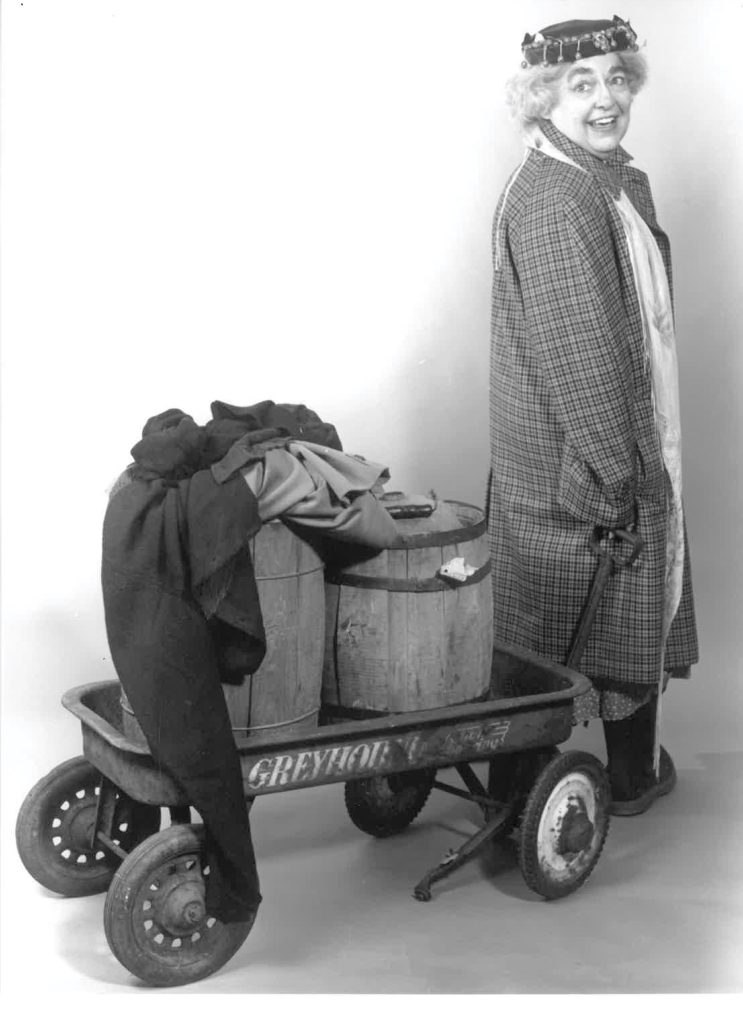
1988 Everybody Loves Opal, Jackie Willis as Opal
